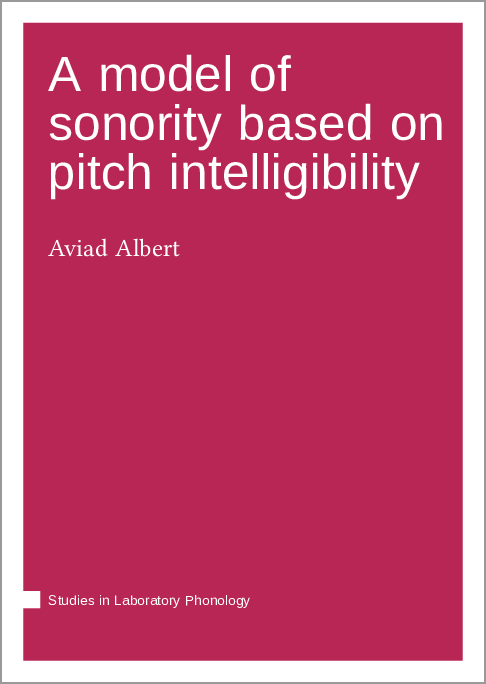In der letzten Zeit sind u.a. diese frei verfügbaren Titel erschienen:
Digitale Schriftlichkeit: Programmieren, Prozessieren und Codieren von Schrift
Martin Bartelmus & Alexander Nebrig (Hrsg.)
https://doi.org/10.14361/9783839468135
Digitale Schriftlichkeit verändert und durchdringt unseren Alltag: Jedem normalsprachlichen Text auf Bildschirmen unterliegt ein schreib- wie lesbarer Code. Die Fragen »Wer schreibt?« und »Wer liest?« wandeln sich in diesem Kontext zu »Wer programmiert?« und »Wer prozessiert?«. Die Beiträger*innen widmen sich diesem Phänomen und verstehen das Codieren als Praxis der Schriftlichkeit. Es zeigt sich: Die Digitalisierung formt Schreiben und Schrift in einer Art und Weise um, die weit über die unterschiedlichen semiotischen und symbolischen Ebenen von Code und Schrift hinausgeht.
A model of sonority based on pitch intelligibility
Aviad Albert
https://langsci-press.org/catalog/book/381
https://doi.org/10.5281/zenodo.7837176
Sonority is a central notion in phonetics and phonology and it is essential for generalizations related to syllabic organization. However, to date there is no clear consensus on the phonetic basis of sonority, neither in perception nor in production. The widely used Sonority Sequencing Principle (SSP) represents the speech signal as a sequence of discrete units, where phonological processes are modeled as symbol manipulating rules that lack a temporal dimension and are devoid of inherent links to perceptual, motoric or cognitive processes. The current work aims to change this by outlining a novel approach for the extraction of continuous entities from acoustic space in order to model dynamic aspects of phonological perception. It is used here to advance a functional understanding of sonority as a universal aspect of prosody that requires pitch-bearing syllables as the building blocks of speech.
This book argues that sonority is best understood as a measurement of pitch intelligibility in perception, which is closely linked to periodic energy in acoustics. It presents a novel principle for sonority-based determinations of well-formedness – the Nucleus Attraction Principle (NAP). Two complementary NAP models independently account for symbolic and continuous representations and they mostly outperform SSP-based models, demonstrated here with experimental perception studies and with a corpus study of Modern Hebrew nouns.
This work also includes a description of ProPer (Prosodic Analysis with Periodic Energy). The ProPer toolbox further exploits the proposal that periodic energy reflects sonority in order to cover major topics in prosodic research, such as prominence, intonation and speech rate. The book is finally concluded with brief discussions on selected topics: (i) the phonotactic division of labor with respect to /s/-stop clusters; (ii) the debate about the universality of sonority; and (iii) the fate of the classic phonetics–phonology dichotomy as it relates to continuity and dynamics in phonology.
Who benefits from the sanitized language of violence?
Matthew Fyjis-Walker
https://doi.org/10.1163/9789004696426
Language is not neutral; it determines, and is determined, by perspective. This volume explores the role of an influential vocabulary of war, sanitised language, the language that seeks to clean up the appearance of events through euphemism, abstract words and opaque phrases. Critical discourse analysis of the language of recent military campaigns shows that the public authorities do not explain events as clearly as they might. Despite social, political and strategic incentives to use sanitised language, its use appears to undermine the democratic process and reduce public authorities’ freedoms, possibly emboldening adversaries and turning away potential partners.


